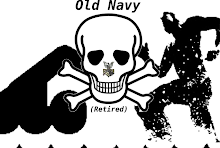ST. LOUIS —
Yoshio Matsumoto was among the 110,000 Japanese-Americans seemingly bound for an internment camp soon after America entered World War II when a university he knew nothing about from a far off part of the country agreed to take him in.
Last week, the 88-year-old retired engineer was back on campus at Washington University in St Louis for the first time since graduating in 1944. He wasn’t just revisiting fond memories—Matsumoto’s grandson, Andy Matsumoto, is an incoming freshman.
“I’m proud of him,” Yoshio Matsumoto said. “Kind of a family tradition.”
Maybe, but the circumstances are unique enough that Chancellor Mark Wrighton met with Yoshio, his son, Joe Matsumoto, and Andy for about an hour on Friday to welcome them to campus.
Yoshio Matsumoto was among the 30 Japanese-American students slated to go to the camps that Washington University accepted soon after Japan’s attack on Pearl Harbor on Dec 7, 1941, thrust America into the war. Nationwide, 680 colleges and universities accepted about 4,000 such students, according to the National Japanese American Student Relocation Council, a group of religious, academic and civic leaders that sought to help affected students continue their studies.
At the time of the attack, Matsumoto was a mechanical engineering student at the University of California, Berkeley. He remembered dealing with an array of emotions.
“There was some fear and anger, and some feeling of shame that the nation of my parents would attack the United States,” he said. “I would be walking to class with that feeling that everybody was looking at me like I was the enemy.”
By February 1942, President Franklin Roosevelt had signed an executive order calling for Americans of Japanese heritage to be moved to relocation centers, commonly known as internment camps. Like many Japanese Americans living in coastal areas, Matsumoto’s parents and siblings were soon sent from their home in San Diego to an assembly center—a temporary staging area before an internment camp.
Because Matsumoto had remained at Berkeley at his mother’s urging, he was sent to a different assembly center in California, where he was among 7,800 Japanese-Americans crowded into temporary housing at a race track.
“Barbed wire, guard towers,” he recalled. “You’re confined inside. There was no communication with family.”
The next step was an internment camp in Utah. But there was hope. The National Japanese American Student Relocation Council formed, and several colleges and universities away from the West Coast were expressing a willingness to allow students of Japanese heritage to continue their studies.
In a 1942 letter to the registrar of a California college, Washington University Chancellor George Throop made clear the university’s policy on Japanese-American students.
“The attitude of the University is that these students, if American citizens, have exactly the same rights as other students who desire to register in the University,” Throop wrote.
Washington University eventually agreed to “sponsor” Matsumoto. He’d never been away from the West Coast but quickly got a taste of life in St Louis, arriving in October 1942 in a city in the midst of baseball’s World Series. Within weeks, he saw snow for the first time.
Matsumoto said he and the other Japanese-American students were made to feel welcome by their new schoolmates and others in the community. Someone—he wasn’t sure who—picked up part of the tab for his education. The administrators and staff of the campus YMCA helped the Japanese-American students settle in.
“We were very happy and grateful to be able to come here,” Matsumoto said. “There were a number of schools that didn’t want to take Japanese-Americans. But there also were educators who got together and said, ‘We want to get these college kids back to school.’”
That was just good-ole-American racism
Yea, the 1940's 50's and 60's were plenty full of racism.
But America has had very very tough anti-discrimination laws for a long time now....
I am wondering when, if ever, Japan will grow up and out of that 18th century mindset and join the international community....?
Until then, they will remain a country of 3rd rate.


2 Comments
USNinJapan2 at 03:37 PM JST - 9th December
A trip to Guam. What a boondoggle and waste of money. Like a landlord going to check out where a current tenant is going to live once he moves out of the landlord's property. No legitimate purpose whatsoever.
MrUSA at 03:50 PM JST - 9th December
Maybe he wanted a vacation.
mindovermatter at 04:04 PM JST - 9th December
Excuse me..."Host...?"
It's a fricken Territory of the U.S. They're not hosting anything... I like this JT... Ok, let's make Guam out to be an unwilling foreign country getting stuck with "Hosting" their own troops...?
Ha Ha Ha.... Good One!